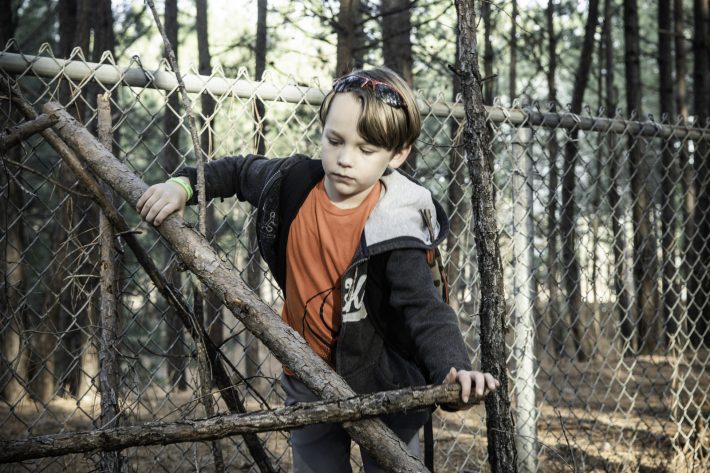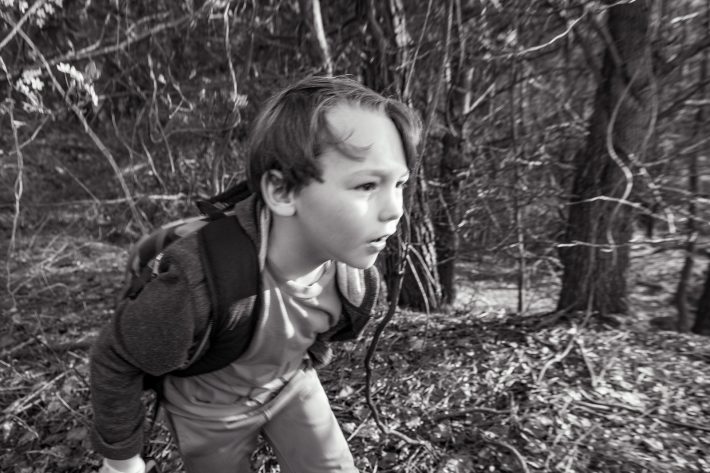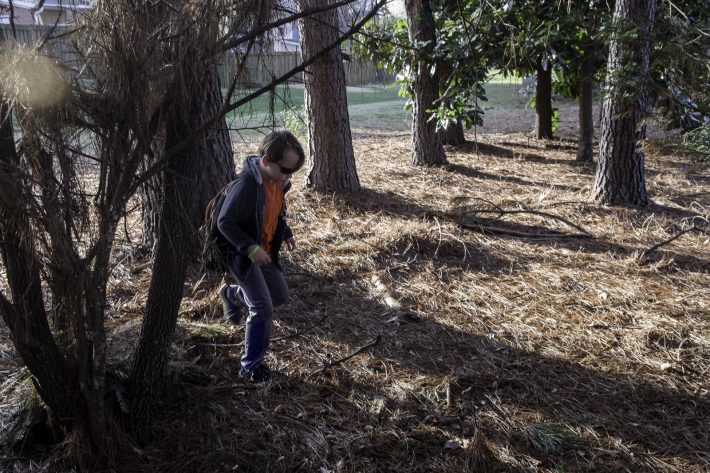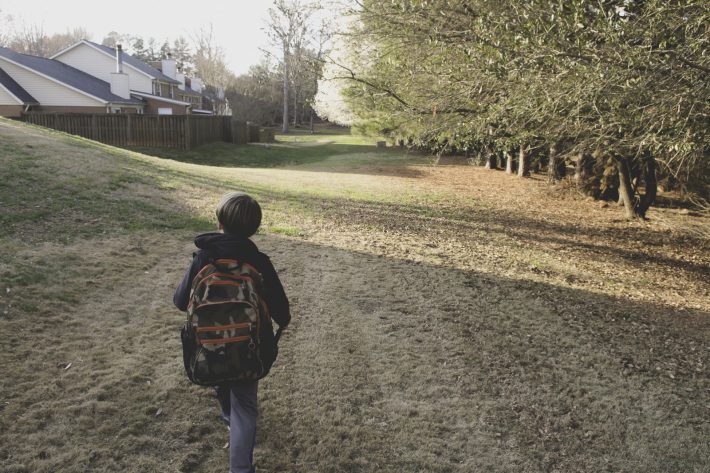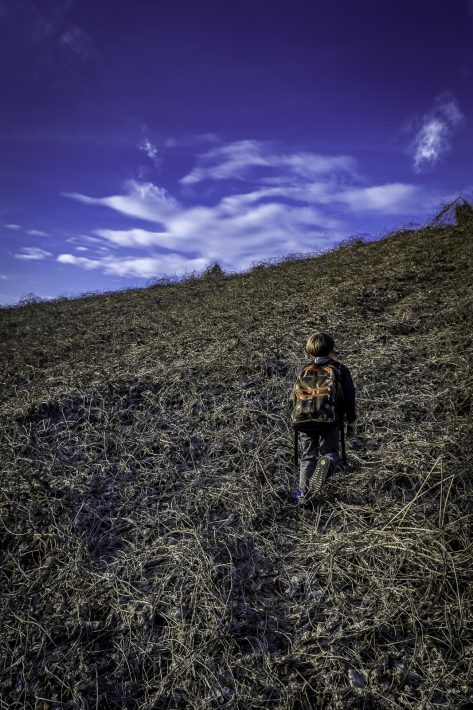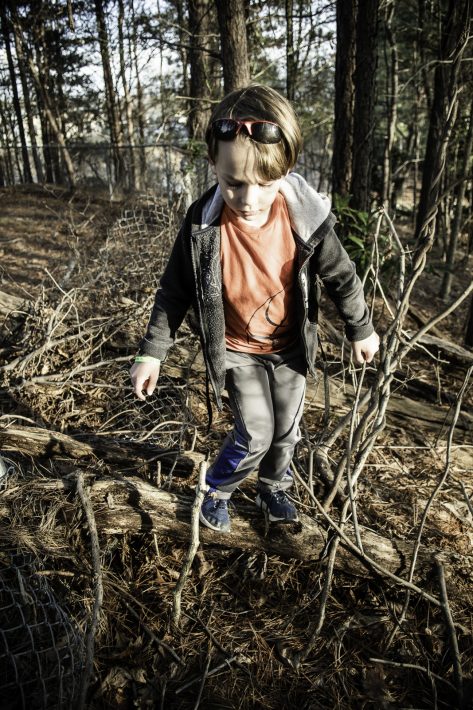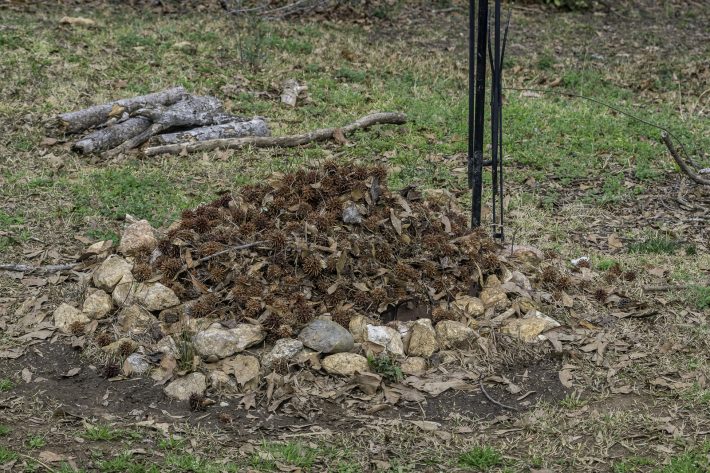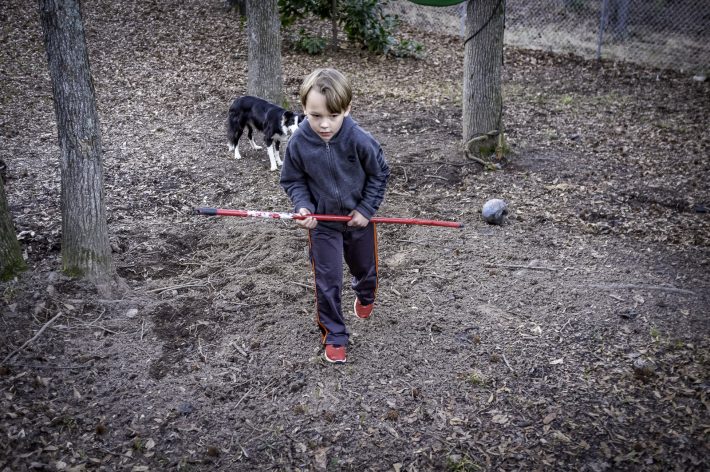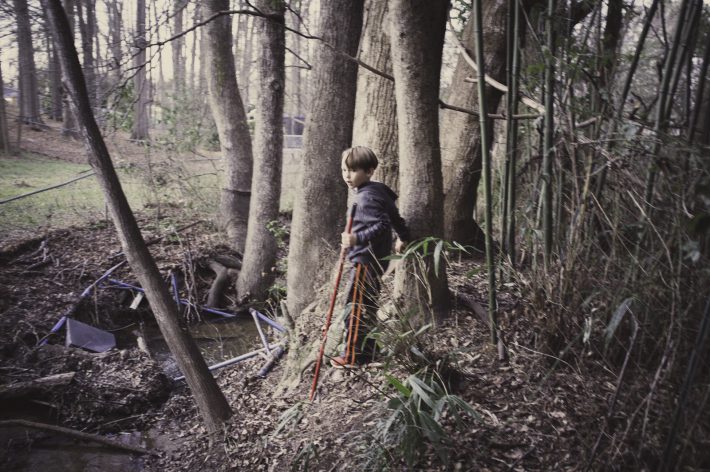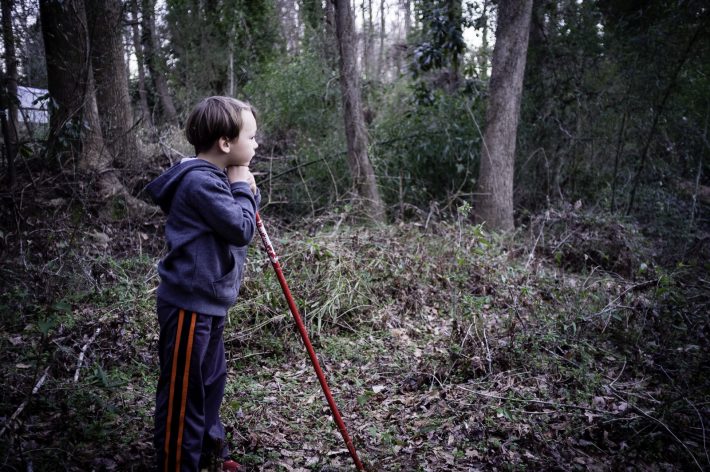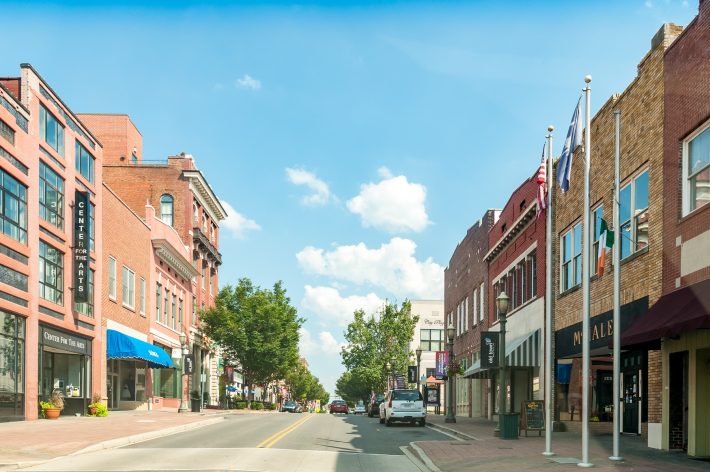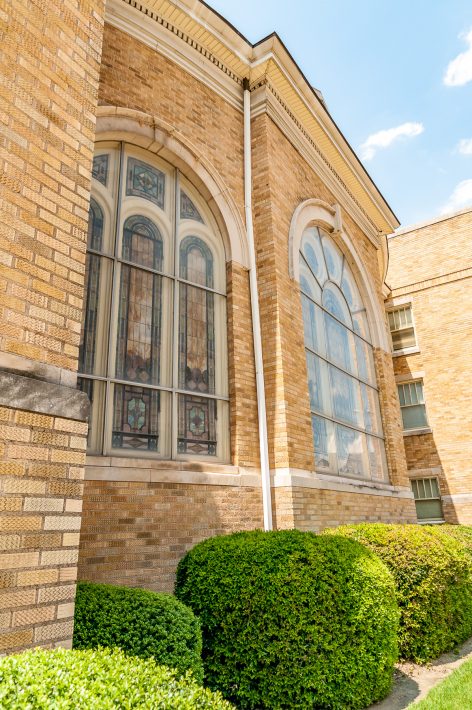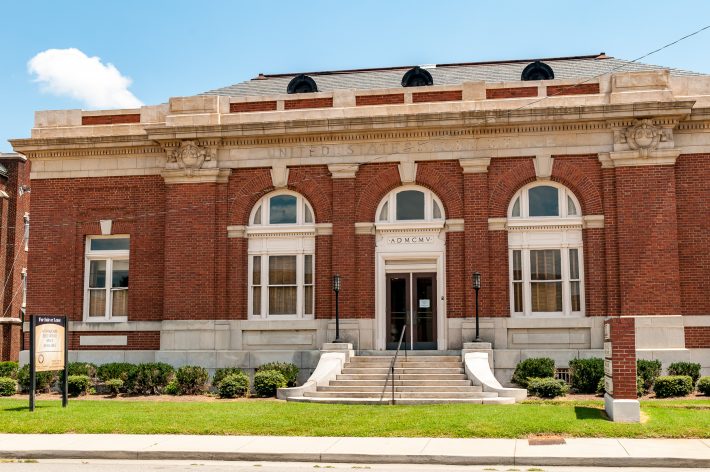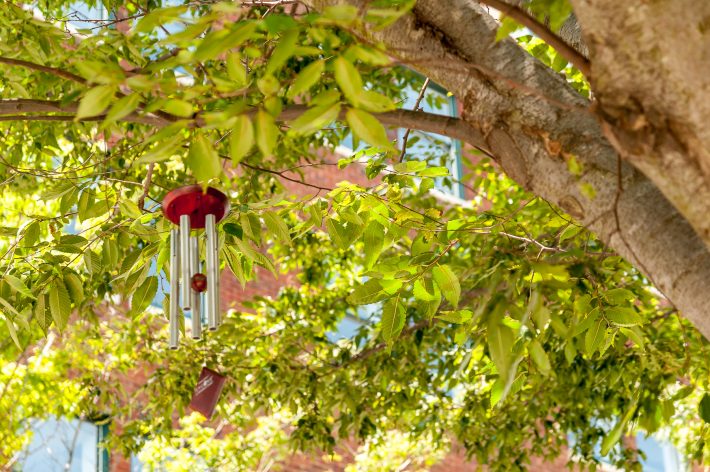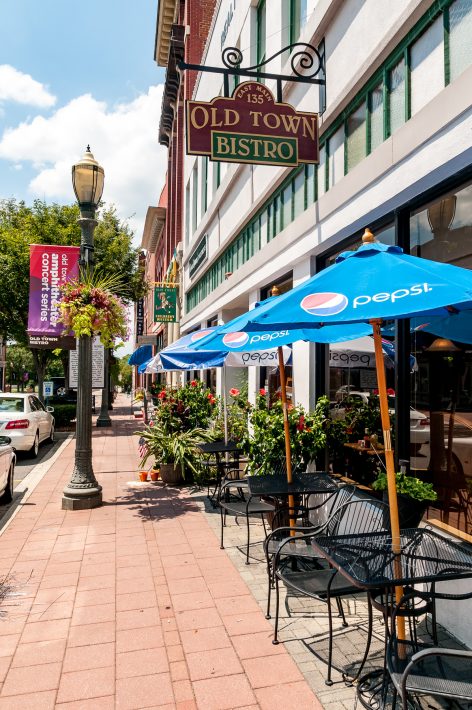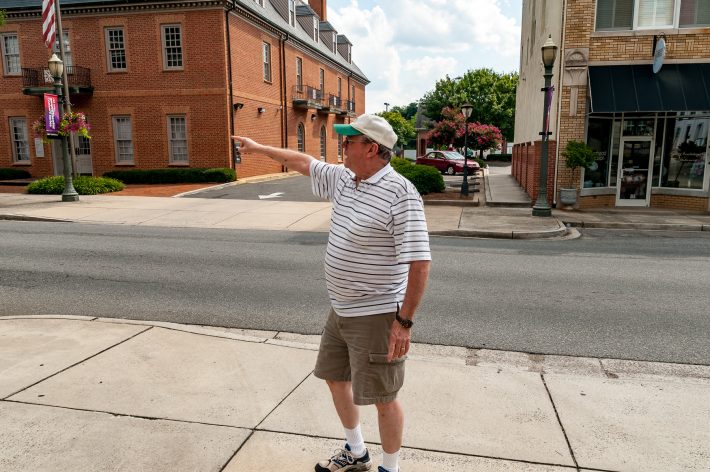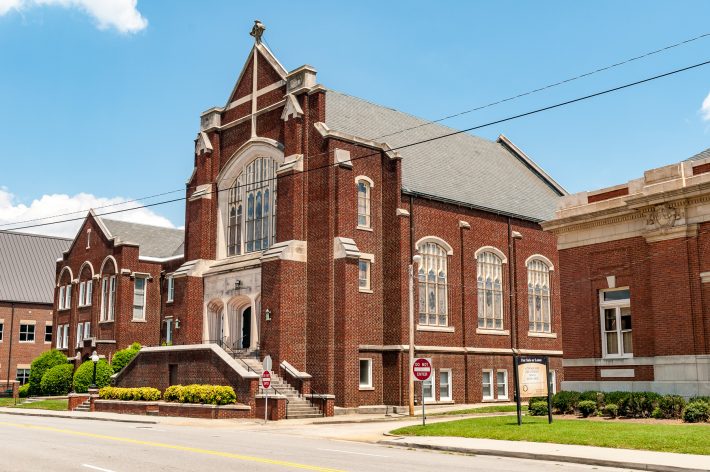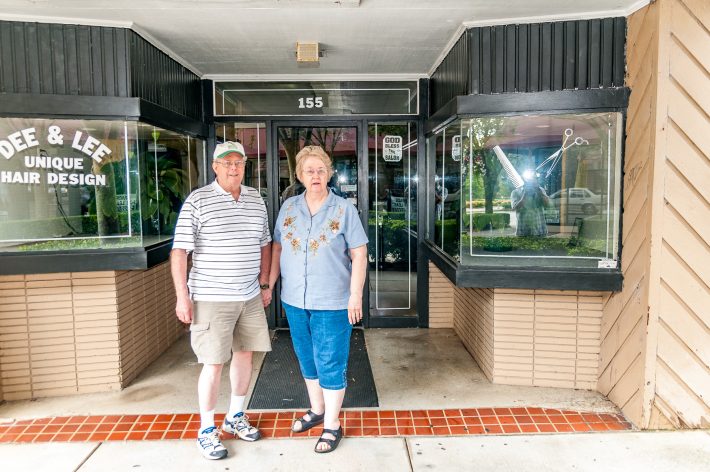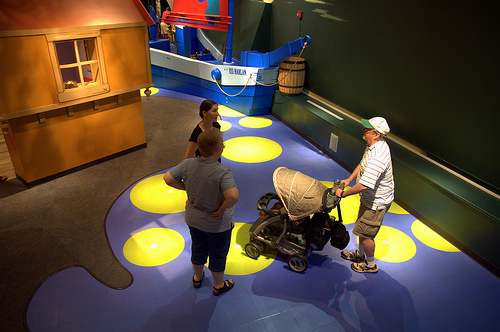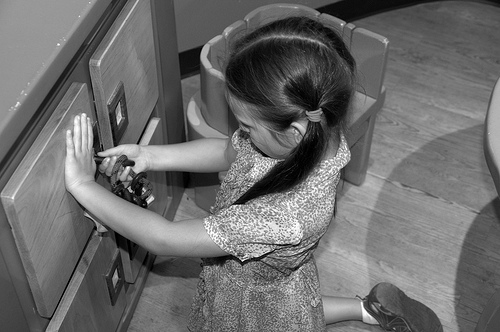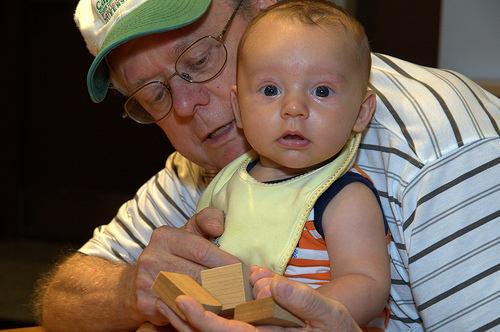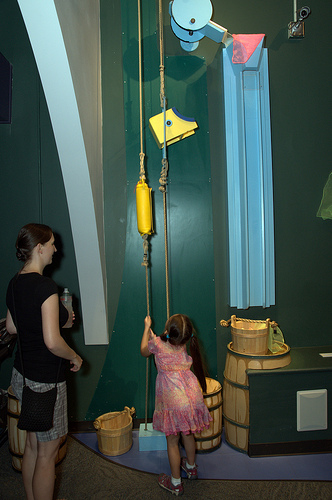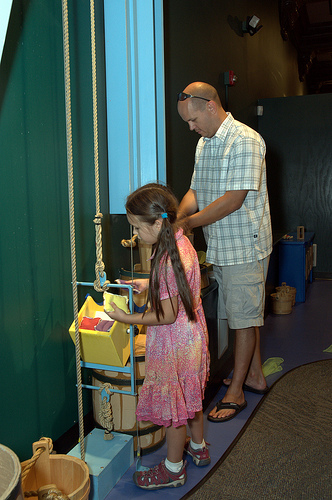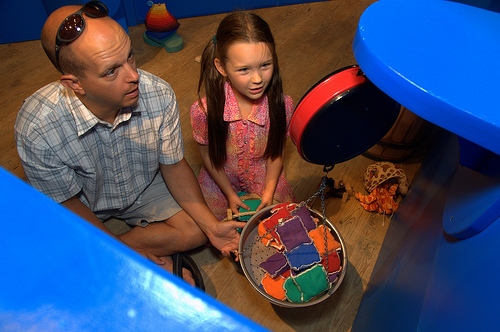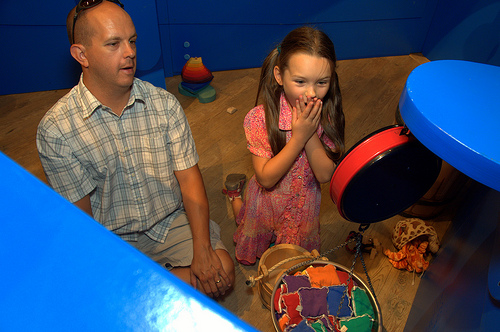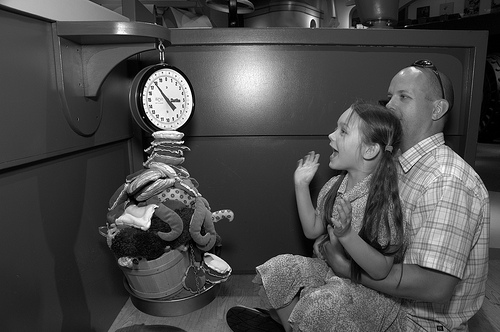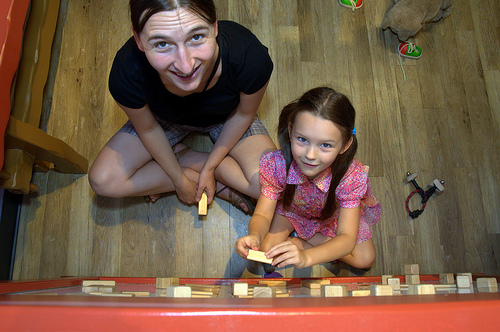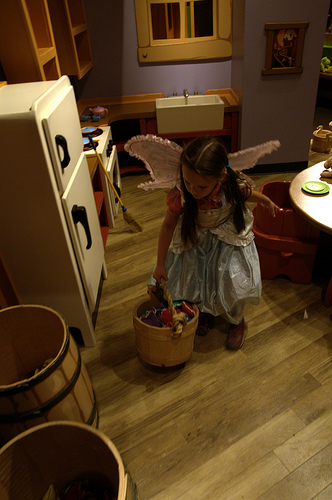Saturday
The Boy and I began the day early for a Saturday. My alarm went off at 6:15 but I snoozed it until 6:30 — that was really the plan when I went to bed last night, I must admit — and we both go up and had breakfast and cartoons (Tom and Jerry) before heading off to Clemson University for the annual Clemson Day for South Carolina Scouts.

It’s supposed to be in the main stadium, which makes it a great draw for everyone, but this year, with the weather questionable, it took place in the football team’s indoor practice area. (You know a football program is bringing in a lot of money for the university when they have a couple of outdoor practice facilities and an indoor one to boot.) Clemson football, soccer, volleyball, and track athletes ran the kids through drills and games for three hours, with each rotation ending with an autograph session.

“Parents, please remember that the autograph time is only for the kids,” the announcer reminded everyone several times.

As I suspected, the Boy was not keen on participating at the beginning. He’d been excited about going when I first mentioned it many weeks ago, but the excitement had waned as the day itself approached, and he suggested that he might just stay with me on the sideline and watch.
I tied gently encouraging him, but he wouldn’t budge. Finally, I went nuclear: “Buddy, I didn’t get up at 6:15 on a Saturday to sit with you on the sidelines.” Once he got out there, he was fine.
In the afternoon, a little exploring.
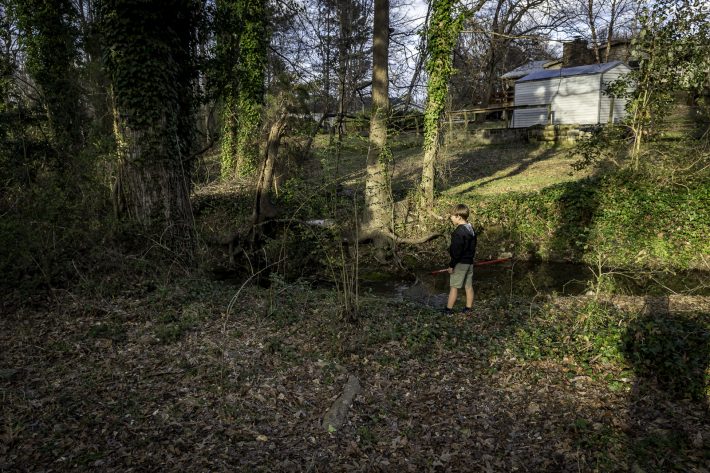
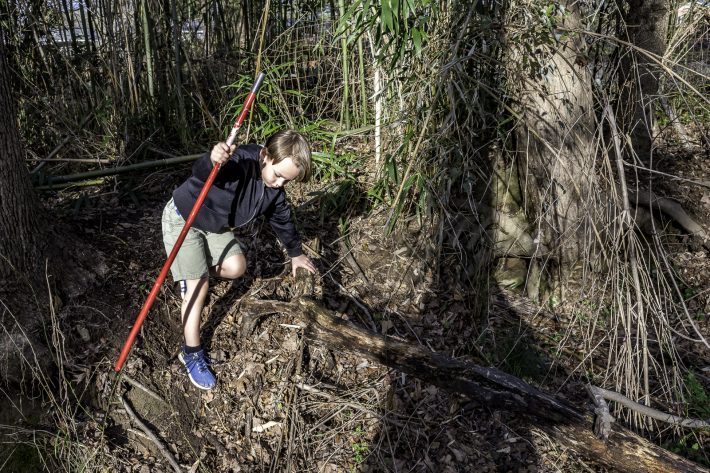
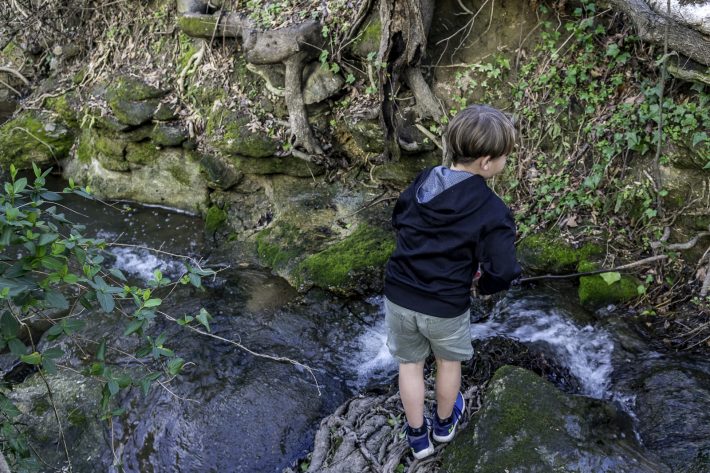

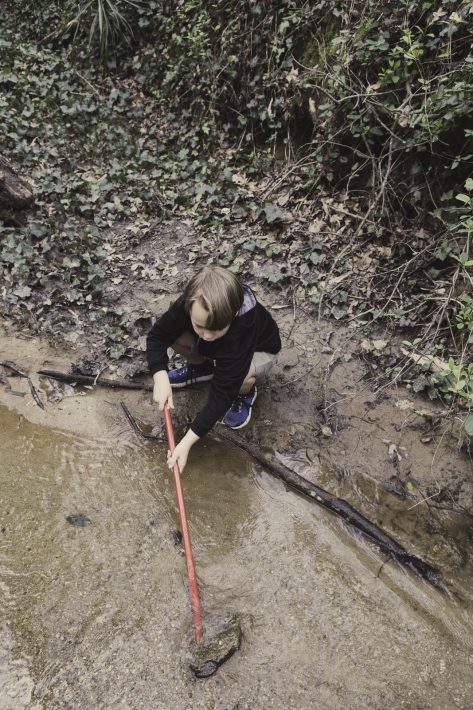
Wednesday Afternoon Exploring
We had a few minutes of sunlight left after dinner, so what did we do? The only thing there was to do — head out to the wilderness that forms the border between our neighborhood and the one next to it and explore.
On the way down, the Boy taught me some ninja tricks, like how to sneak around. Quite a light step that boy has.
Every time we get back here, the Boy suggests that the next time we come, we need to bring some snippers and take care of all the thorns we have to navigate. I’m of two minds about this: on the one hand, it would ease our journey, and it would make some portions accessible. Still, the challenge is half the fun. And it gives us a chance to toughen up.
“Oh, I have a thorn!” the Boy will cry out.
“Tough it out. Push through it,” I reply.
Plus, it’s not our property, I explain…
Decorating and Exploring
When I was a kid, there was nothing better, nothing more exciting, than the discovery of some invitingly unknown path in a place I thought I already knew. Finding a bit of mystery in the known and the everyday. So today, while we were out for a walk with the kids at Nana’s and Papa’s, we decided stroll over to a very familiar area, the swimming pool, where we discovered a mystery: a fence atop a small ridge.
The morning had started with a mystery: the Boy had lost in the night his blue pickup truck, and rather than simply pull the bed out and retrieve it (for if it wasn’t in the covers or under the pillows, there was only one place it could be), I let the Boy search on his own. Being the Boy, he looked in some original places.
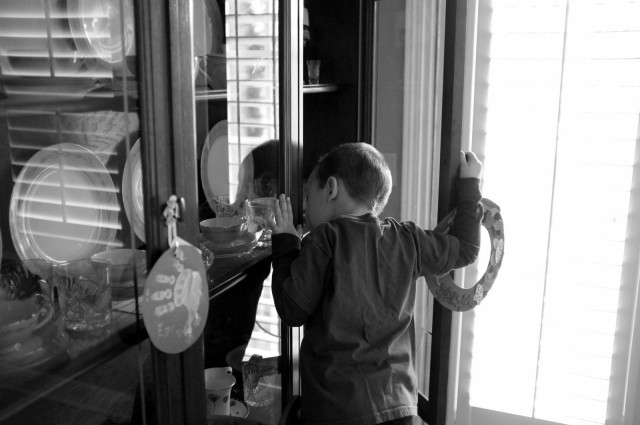
As soon as sister woke up, the urge to build a fort overwhelmed the desire to find the pickup truck, and so the bit of mystery in the middle of the morning disappeared.
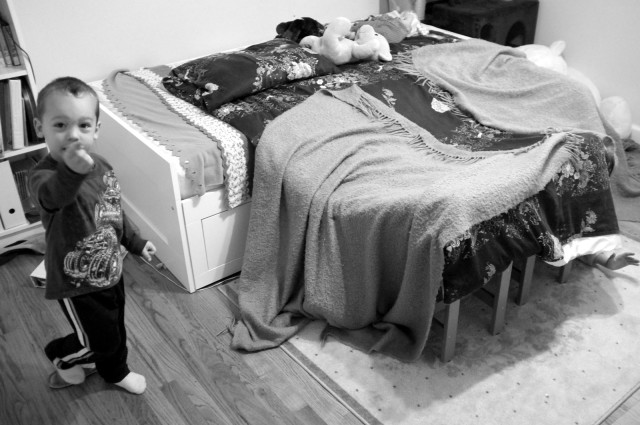
It reappeared at Nana’s and Papa’s. First there’s the strange bit of mystery in getting holiday decorations up. To begin with, the mystery of finding everything. Then there’s the mystery of figuring out how it all goes back together. Not to mention the mystery of the season.

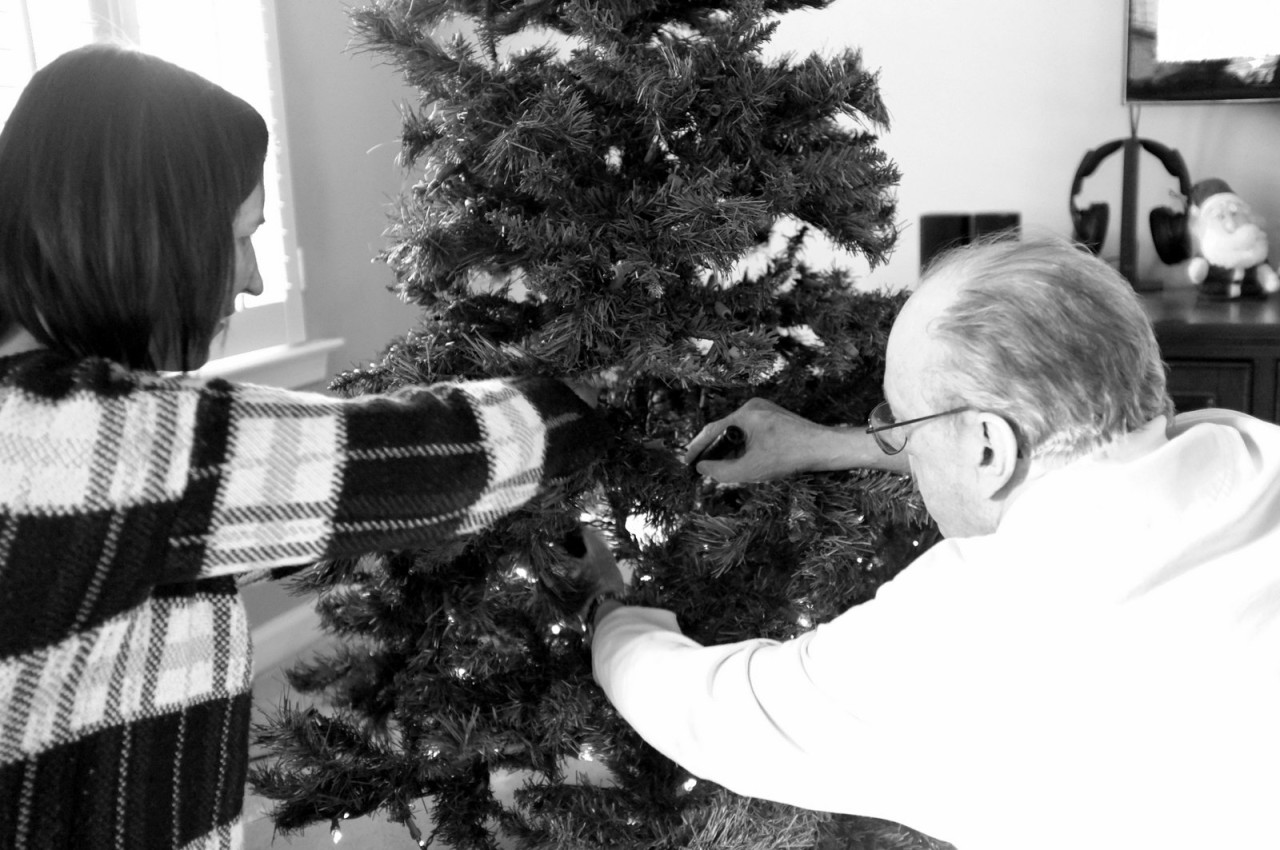

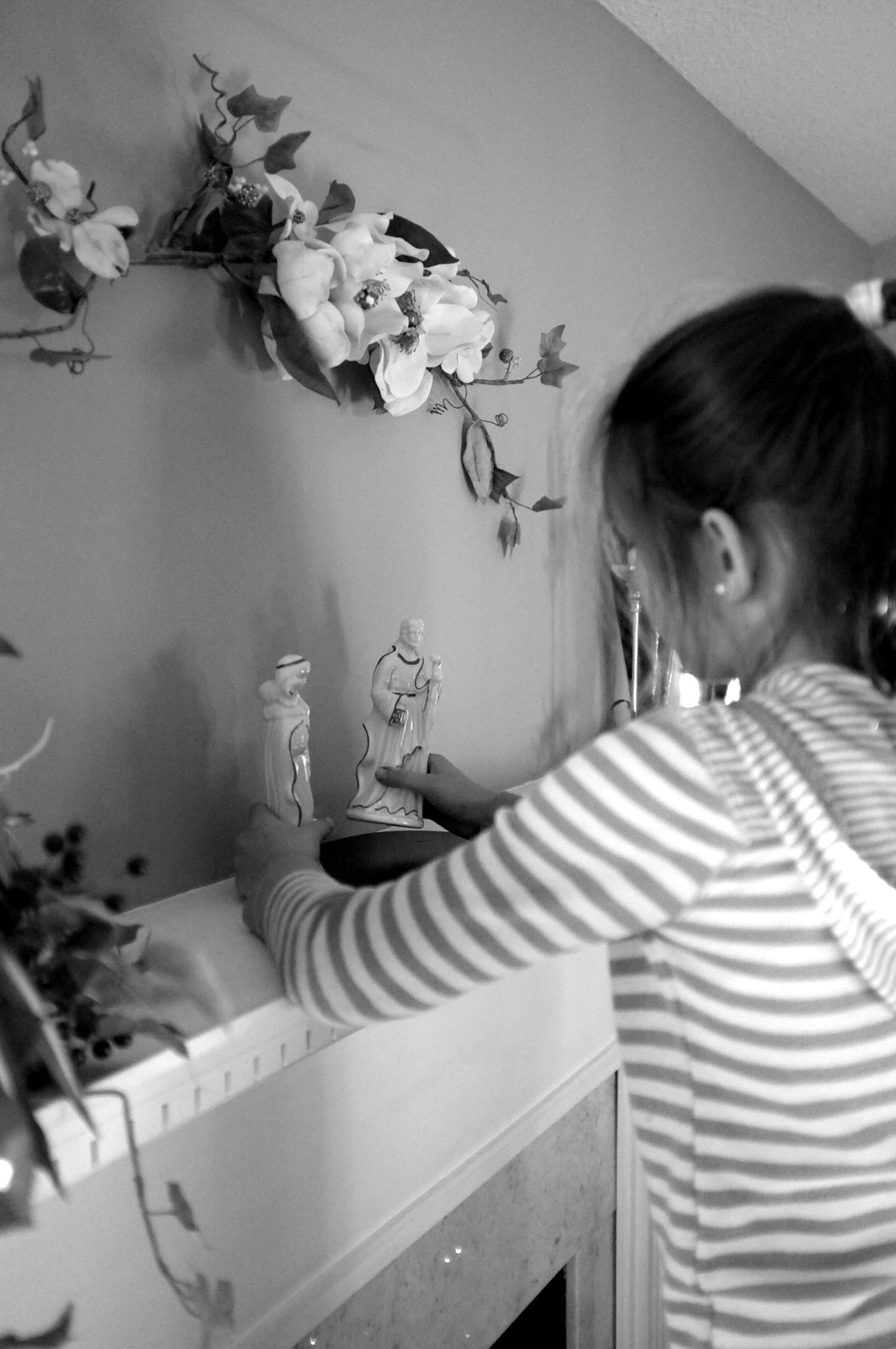
Mystery everywhere. Including, it turns out, in places we might never have thought to look. The weather was so gorgeous that we had to head out for a walk.
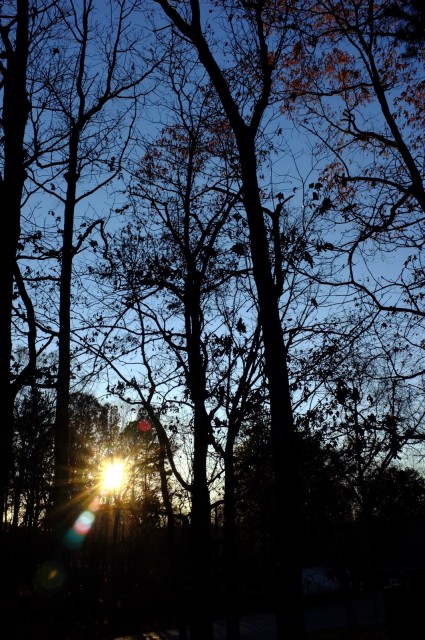
Of course the pool looks a bit mysterious with its winterizing cover.
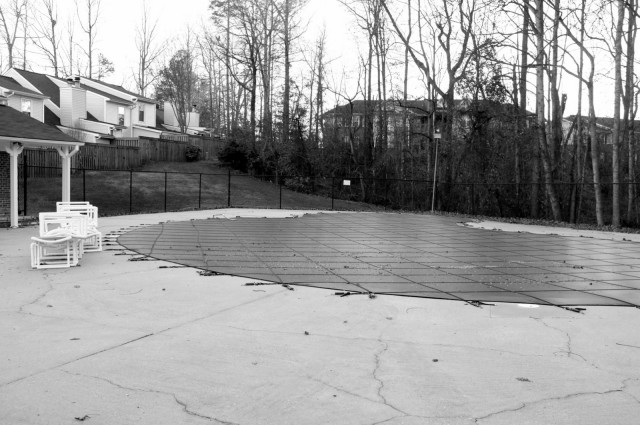
But more mysterious, behind the tennis courts that the residents have turned into a dog park is a small ridge, the top of which is crowned with with a fence. Reaching the top of it, we all saw easily that it was not natural but instead part of a detention pond.
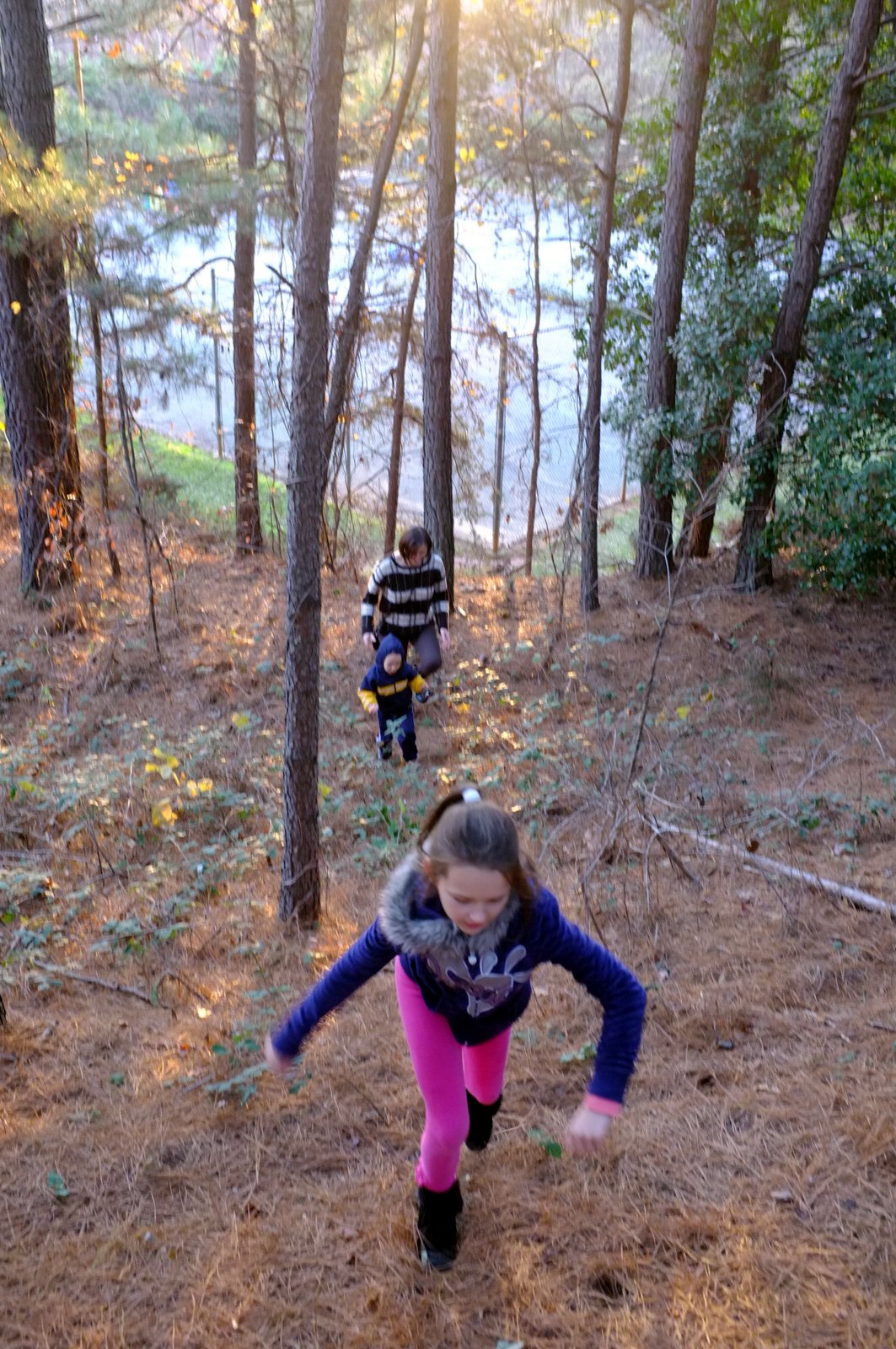
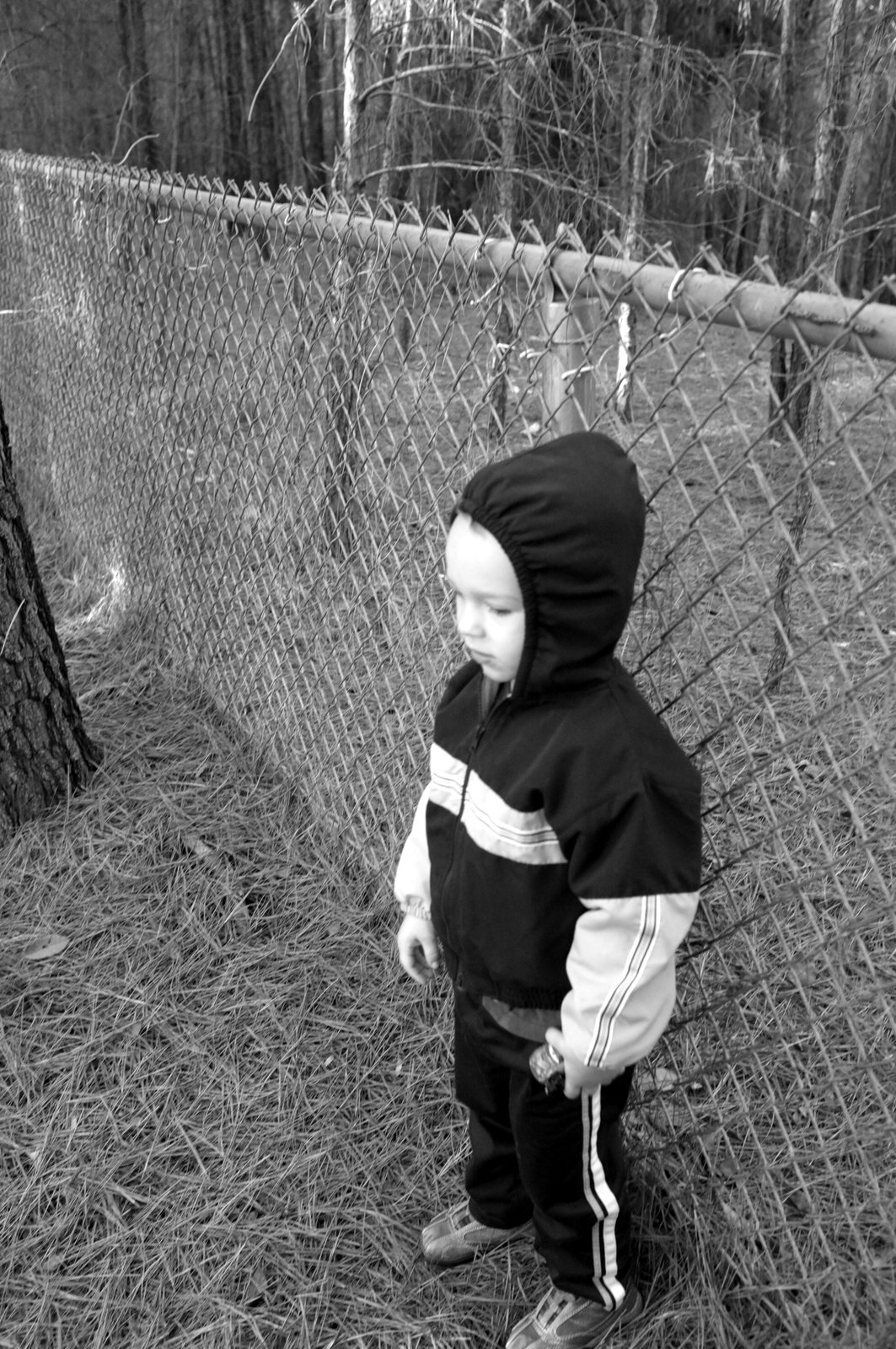
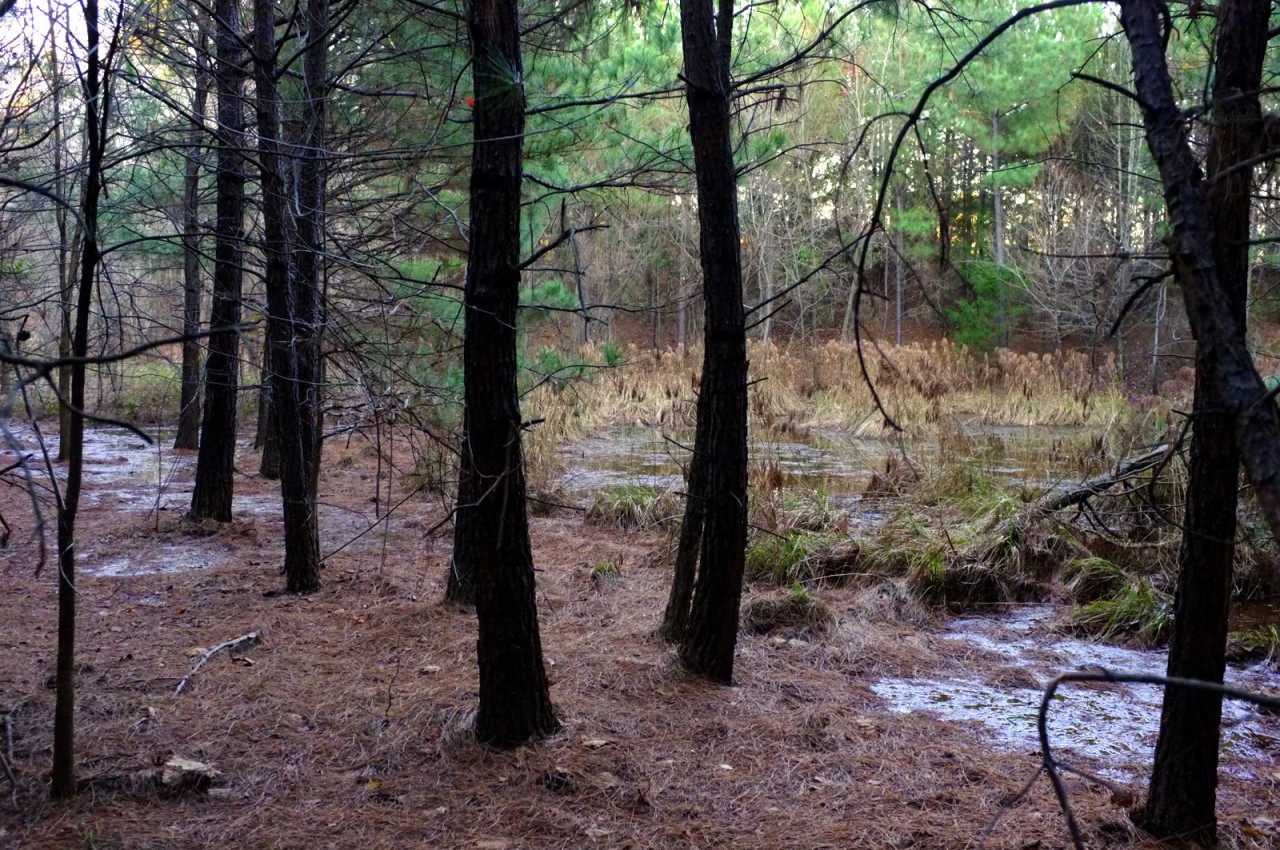

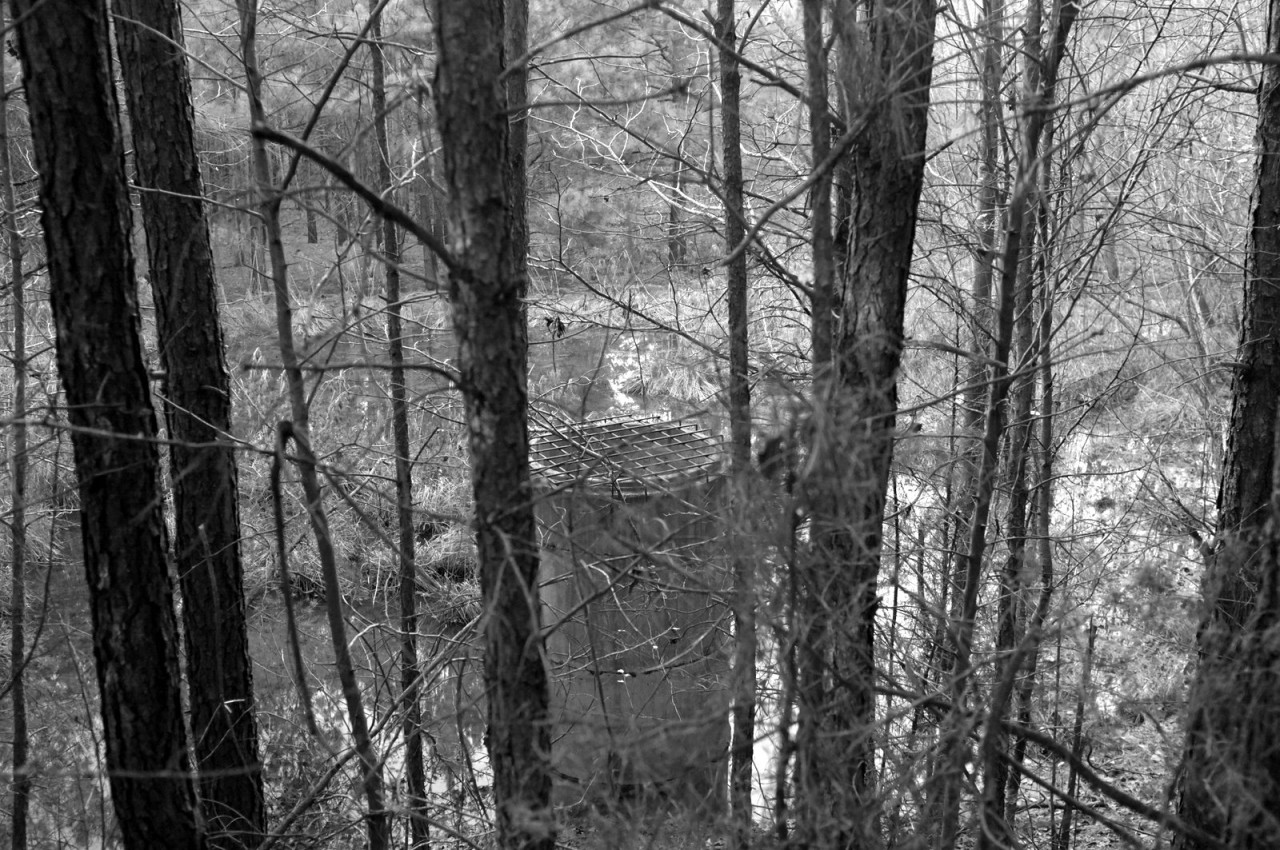
K insisted that it couldn’t be a detention pond proper because real detention ponds in such developments are well taken care of.
Perhaps that’s why there’s a fence.
Downtown Rock Hill, Part 2
Is downtown Rock Hill is the story of America? One would certainly hope not, but in some ways, it seems to have all the elements in parallel. Within a couple of blocks we have signs of incredible affluence

and poverty-driven decay.

What’s the difference between these two homes? What’s the difference between the owners of these homes? Over the last few years, my explanations have shifted from the left to the center-right of the political spectrum. The answer seems hinted in other parts of town.
Still only a few blocks away, Nana points out yet another building with personal significance: the remains of Rock Hill Printing & Finishing. “This was where I was working when I met Papa,” she explains to us. She shows us where she used to enter, pointing out roughly where her desk was.
One wonders if there are any plans to renovate this particular building as others in the area. Just up the road, an old factory has been turned into an apartment complex. One could likely turn this shell into high-ceiling lofts or something similar. But is the demand there? I think back to the abandoned post office just a few blocks away, figuring it’s unlikely that this gigantic building will ever become of anything more than the subject of a blog post.
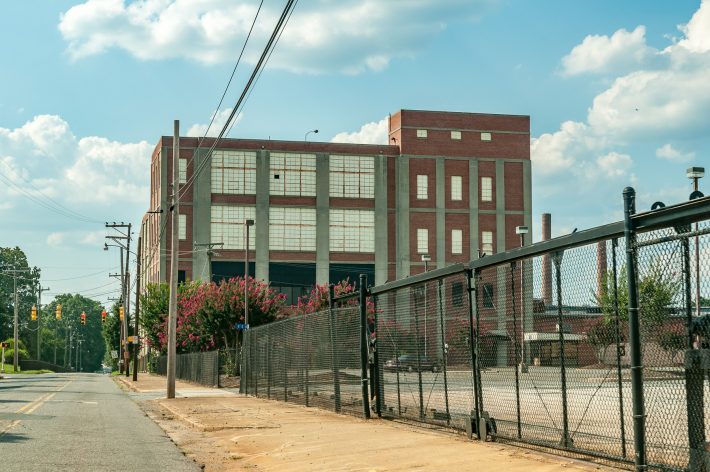
Just behind it lies the heart of the factory, once impressive, but now merely tragic. According to one source,
The building of the Rock Hill Printing and Finishing Plant in 1929 moved M. Lowenstein halfway along the way to becoming a totally integrated producer of textiles. The Rock Hill plant bleached, dyed, printed and finished cloth purchased from a variety of sources, primarily in the South. The rapid expansion of Lowenstein through the acquisition of textile mills produced the raw material for the plant and resulted in its own expansion. By the early 1960s, it grew from a plant with 200,000 square feet to one with more than 2 million square feet, which bleached, dyed, and finished both cotton and synthetic fabrics. New processes such as Sanforizing and the use of Scotchgard TM finishing permitted it to create permanent press cloth during the 1970s. Acquired by Springs Industries in 1986, the plant included 23 roller print machines and 7 screen print machines. (textilehistory.org)
Looking at an aerial view of the factory in its heyday, it’s clear the impact its closure had on the economics of Rock Hill. Now, only inspiration remains.
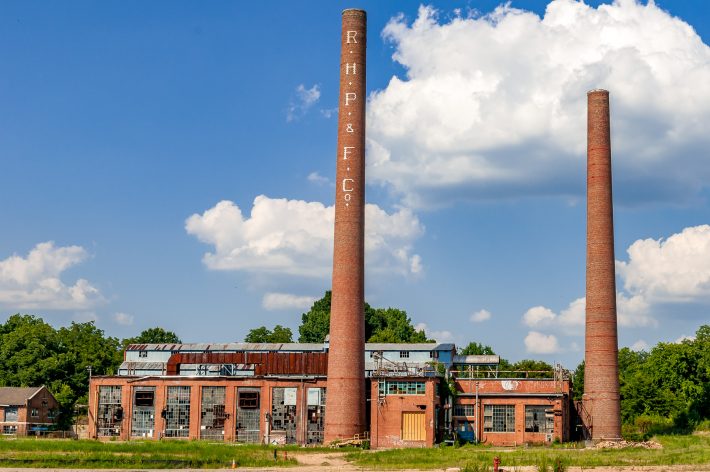
This is the story of South Carolina, a story that hopefully America as a whole will not echo. But I wonder. South Carolina used to be a textile center. My family’s fate was tied into that of the mills. My mother worked in a mill; my grandmother worked in a mill; countless aunts worked in mills. My father did electrical work in mills; my grandfather likely did masonry work for a mill or two. Every South Carolinian has mill work somewhere in her family history.
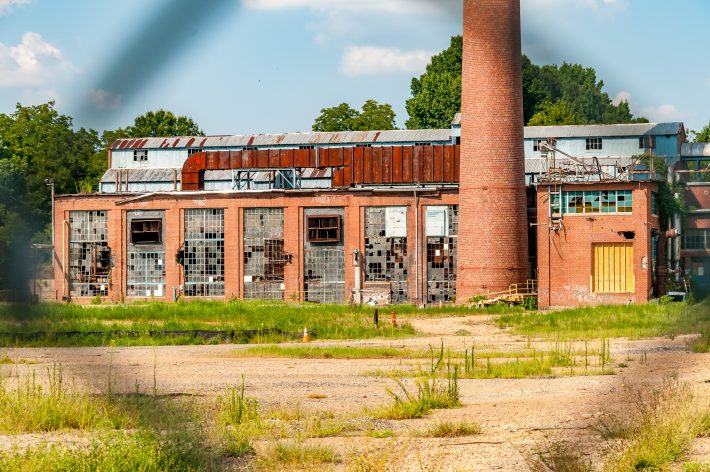
The cemetery just a block or so away is surely filled with those who worked the roller print machines and the bleaching machines, with those who did the screen printing and counted the cost of everything.
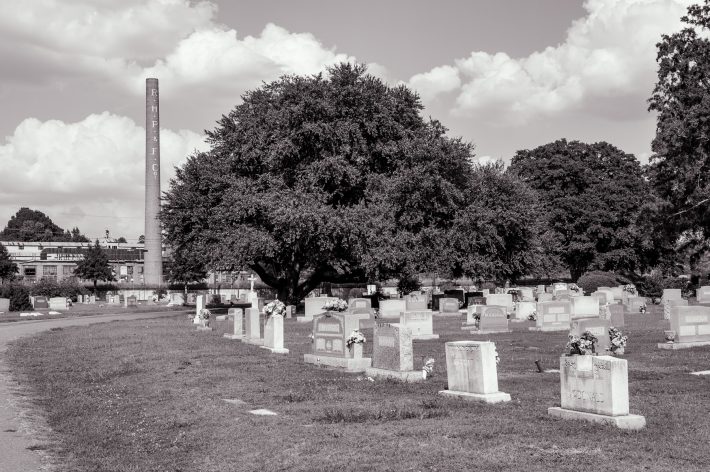
Rock Hill is only one of many textile cities in South Carolina that has suffered this fate. It’s only one of thousands of cities in America that must be harboring doubts that its best days lie in the future.
Downtown Rock Hill, Part 1
Visits to Rock Hill are visits to family. Only rarely is anything else involved. But every now and then, we go beyond the normal visit schedule. This week, we went downtown to visit the children’s museum. After the visit and a quick lunch, we went for a quick walk.
Like many old, small downtown areas, Rock Hill’s small main street is both heartening and depressing.
On the heartening side, it’s good to see so many beautiful, historic buildings renovated and put to new use. A Baptist church is now a community center.
Yet the renaissance is only partial, as it often is. Across the street from the restored church is an abandoned post office that stands empty. What are the possibilities? Certainly endless, but the economy places its own limitations, I suppose.
Just down the street, more evidence of a halting recovering for the downtown area.
Yet perhaps things are not as they seem. A quick search reveals that Penny Young still runs a studio by the name Photographic Designs. Perhaps she outgrew the space?
Still, one has to admire the effort and the little touches, like the music in the trees, initially confusing as one wanders about,
and the little cafes with outside tables that would be more inviting if it weren’t for the heat of a South Carolina summer.
As we walked, though, we weren’t as interested in what is happening in 2012; we were more interested in what was happening in the early 1950’s when Papa was a kid.
“Here’s where we had our high school Bucket of Lard sermon,” he explained, with typical sarcasm, pointing to a church just meters away from the renovated church/community center. Who knew there were so many churches in downtown Rock Hill?
Another church, just down the street, was the sight of a run-in with the police. “We were roaring down the street on our skates — and these were those skates you strapped onto the bottom of your shoes and tighten with the key you kept hung round your neck — and the officer comes running out to us, furious. ‘Don’t you boys know there’s a funeral going on in there?'” One can only imagine the noise several boys on metal-wheeled skates.
Still, it wasn’t all amusing stories. Some were touching.
At the coveted location of the prestigious Dee & Lee Unique Hair Design, there was once a jewelry store. The large display windows are now virtually empty, though one can imagine them filled with bracelets, earrings, necklaces, and rings of gold and silver, all glittering enticingly.
The significance is likely obvious: “This is where I bought Nana’s engagement ring,” he explained as we passed by. It was a photo op one couldn’t pass up: a happy couple standing in front of a hair salon — a picture that contains a secret history.
Children’s Museum
Our trips to Rock Hill are almost always the same: we go to visit family. It’s a rhythm, as predictable as the beat of a Sousa march. That’s not meant to be a complaint: there’s comfort in ritual.
Yet sometimes, it’s good to change the beat a little. K, with her adventuring spirit, is always a catalyst for those changes.
“Did you know there’s a children’s museum in Rock Hill?” she asked earlier this week. “Maybe we could go on Sunday, after we meet with family.” I did not know, but after a lazy morning, we head out for Main Street in downtown Rock Hill.
The museum is small — minuscule, in fact, compared to the Children’s Museum of the Upstate here in Greenville, which is three stories of adventure. Yet L doesn’t complain. She takes off exploring immediately.
Papa doesn’t complain either. He gets the Boy, who at eleven weeks looks and feels (he weighs over sixteen pounds already and is already wearing clothes for babies six to nine months old) much older than he is.
The Girl, though, has no time to sit for pictures with Papa, or anyone else for that matter. There is a pulley systems to explore.
And a scale with a barrel of bean bags beside it.
“Which do you think weighs more? A round one or a square one?” I ask. We perform an impromptu experiment to determine that square ones weigh a touch more.
But what happens if we put them all in? Every last bean bag?
And what happens if we put everything in sight into the sale?
Soon, she’s creating magnet art with K, exploring the dress up room (located inside a vault — the building used to house a bank), and returning to her favorite stations.
In the end, she finds perfection: a small kitchen with two buckets of bean bags. She spreads them all over the floor, then takes the broom and sweeps them into piles before collecting them in small wooden buckets she later dumps into the barrels.
“Daddy, I’m Cinderella,” she begins, and I know the rest: “And you’re the evil step-mother.” I tell her how awfully she’s cleaning, then kiss her and remind her, “We’re just playing, remember? I don’t really think you’re doing an awful job.”
“Oh, I know.”
Tools of the Trades
We saw them in the morning as we were heading to summer ballet: a company from Georgia was digging up portions of the street and shoulder to lay pipe. There were various vehicles for digging, grading, and flattening, and I proposed, “After ballet we could walk up here and watch them use those big machines.”
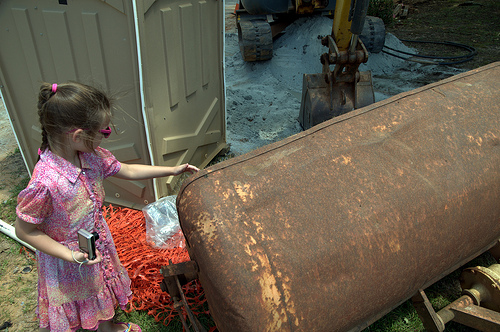
We decided it might be a good photo opportunity, so I took our big camera and L took our small camera, telling jokes on the walk to the top of our street where we’d seen them working. I hoped it might inspire the Girl to take pictures of something other than the ground, her favorite subject.
When we arrived, though, the workers had already left. Their various tractors stood idle, some of their cabs enclosed in pad-locked sheets of metal. “Perhaps they begin early in the morning to avoid the heat,” I suggested. Still, we decided to look around, first examining an old Ford tractor’s street brush attachment.
“Know what this is for?” I asked.
“It’s wire!” was the answer.
“Yes, but what do you think they use it for?”
A shrug. “Dunno.” (Where did that come from? Where does she pick up all these things? Is she a sponge?)
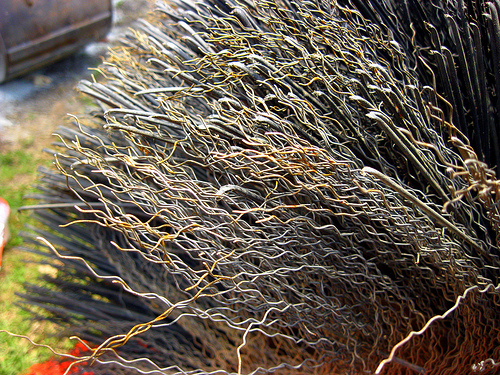
“They use use it to clean the street.” I paused. “Funny, huh?”
Giggles for a moment, then she exclaimed, “I need to take a picture of that.” She took two, both of them fairly well composed for the Girl’s thrust-camera-forward-and-click photo composition method.
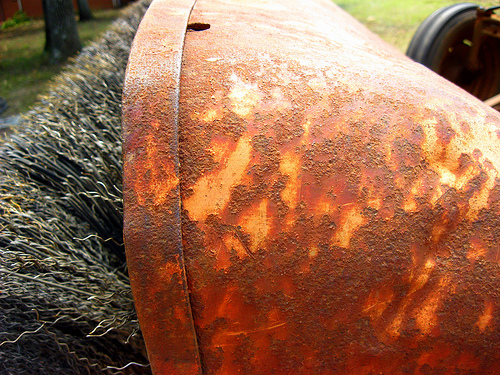
And of course, being the photo-geek I am, I had to take a picture of her taking pictures.
“Why is it blue?” she asked.
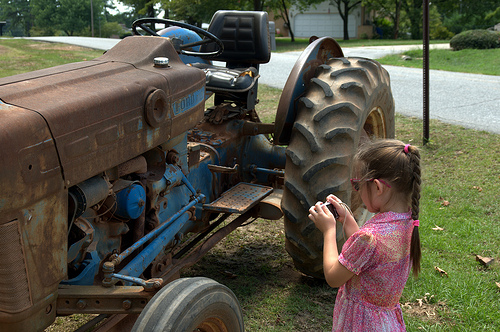
“Because they wanted to make it your favorite color” I replied. She gave me that look she’s now mastered that says clearly, “There’s no way I believe that.”
She clarified: “But why isn’t it all blue?”
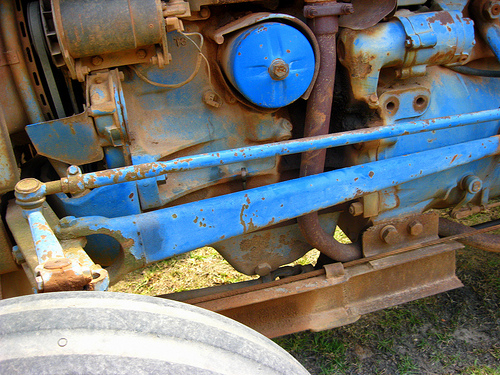
“I don’t know,” I responded, hoping that would be the end of it. Accepting the limits of my knowledge is something that takes time for the Girl. Later in life, we refer to this as the realization of one’s father’s mortality; for now, it’s simply impossible that Tata doesn’t know everything.
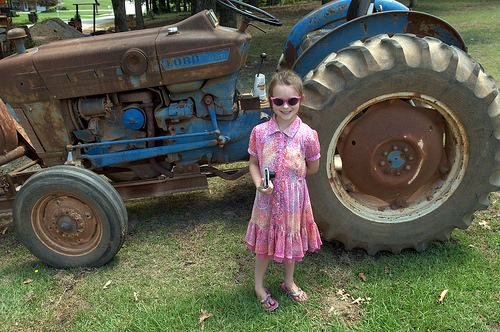
Yet I do know how to operate a camera, and lately L has become more aware of being the object of photos, and so it was today. Pictures were posing events.
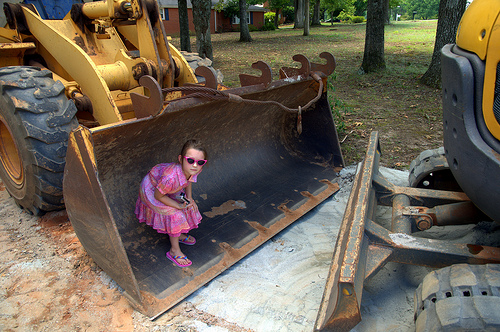
New locations, new shots. New questions, new fears overcome. Each day with the Girl can be filled with surprises.
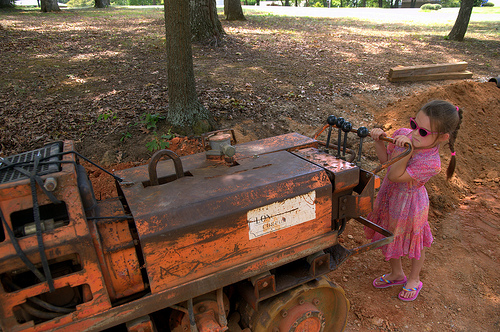
And there was even a bit of role playing.
